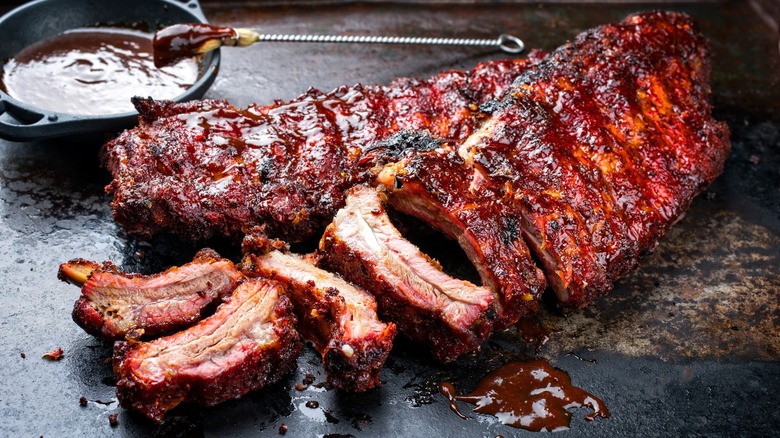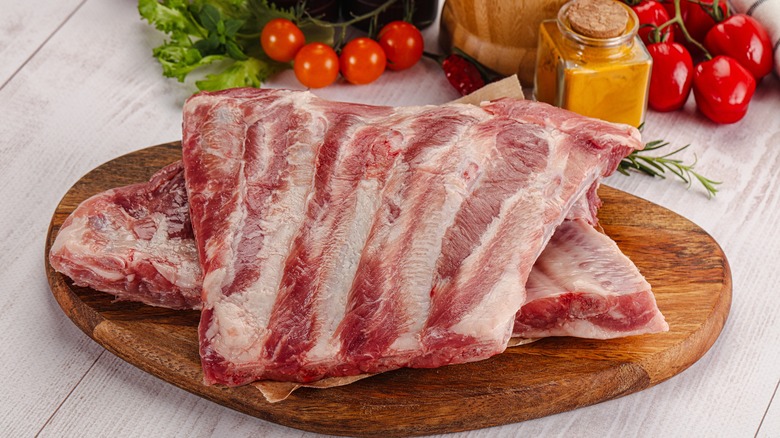Why You Should Consider Cooking With Spare Ribs More Often
Baby back ribs are the go-to rib of the cooking world, but when you look at alternative types of ribs, like spare ribs, it can be hard to understand why. It's not that baby backs aren't delicious, it's just that there isn't much that makes them better than the alternatives, and they also have a higher price point. In the end it almost seems like a case of branding winning out over substance. When you think ribs, you think "baby back," while spare ribs literally sound like cast-offs.
But like so many other types of cheap meat that were once dismissed as undesirable, such as ribs' barbecue partner brisket, spare ribs actually have a lot going for them. So Tasting Table reached out to Robbie Shoults, a celebrity chef who is also the third-generation owner of Bear Creek Smokehouse, the owner of Marshall Mercantile and High Horse, and the founder Bear Rubz Grillin' Spices, for his explanation on why you should consider cooking more with spare ribs.
Shoults explained to us, "Spare ribs are great and are lower priced than some other types of ribs simply because they are not in high demand like baby backs." And while a lower price point is one big mark in their favor, that's not all. Shoults says, "They will have plenty of meat that is well-marbled with fat, which means that they could be more flavorful." Cheaper and more flavorful? Well, what are you waiting for?
Spare ribs are richly flavored and more affordable
If you wonder why spare ribs are both cheaper and more flavorful, it's because they are cut from a different section of the animal. While baby backs come from the back near where the ribs meet the spine, spare ribs are cut from near the belly. This means they have more fat, which makes them tastier, but it also means there is more connective tissue and cartilage, which can be frustrating to deal with and means they take longer to cook. This makes them less desirable, or at least, that's how the typical thinking goes. However, you can get St. Louis-style spare ribs, which trim away the cartilage and make spare ribs easier to cook.
Like any ribs, the key to tender spare ribs is to go low and slow, and they can be used in any recipe where baby back ribs are used. They are just going to need more time — up to 50% longer. Or if you want to speed up the process, they need to cooked at a higher temperature, closer to 300 degrees Fahrenheit. With more fat than baby backs, they will have tons of flavor, so try a lighter hand on the additions and try a dry-rubbed rib without the sauce. If you miss that classic rib flavor, oven-baked spare ribs are an easy meal that really only needs time. Baby back ribs have hogged the spotlight for too long: It's time for spare ribs to shine.

